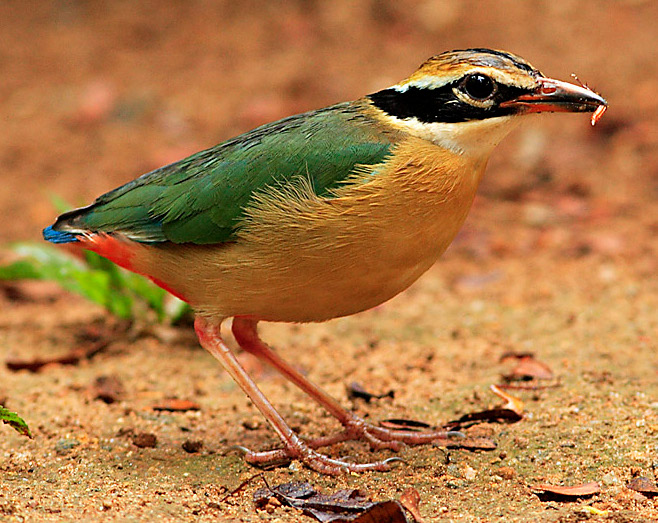- Indian Pitta
Taxobox
name = Indian Pitta
status = LC
status_system = iucn3.1

image_width = 250px
regnum =Animal ia
phylum = Chordata
classis = Aves
ordo =Passeriformes
familia = Pittidae
genus = "Pitta"
species = "P. brachyura"
binomial = "Pitta brachyura"
binomial_authority = (Linnaeus, 1766)The Indian Pitta, "Pitta brachyura", is a medium-sized
passerine bird . It breeds in theHimalayas and northeasternIndia and winters in southernIndia andSri Lanka . It is a stocky terrestrial bird which mostly inhabits wet forest floors. It has long, strong legs, a very short tail and stout bill, with a buff colored crown, a thick black eye stripe and white throat and neck. The upperparts are green, with a blue tail, the underparts buff, with bright red on the lower belly. The legs are buff.Its diet consists of snails, insects and similar invertebrate prey. It lays up to six eggs in a large spherical nest in a tree or shrub. Differences between the sexes are few, but young birds are duller than the adult. Despite its bright colours, this species can be very difficult to see, as it forages low in the dense forest habitat. It is much readily heard, and has a distinctive two-note wolf-whistle.
References
* "Birds of India" by Grimmett, Inskipp and Inskipp, ISBN 0-691-04910-6
* "Birds of Goa" (video)External links
* [http://nagpurbirds.org/thumbnails.php?album=138 Details and pictures of Indian Pitta from Nagpur, India]
Wikimedia Foundation. 2010.
